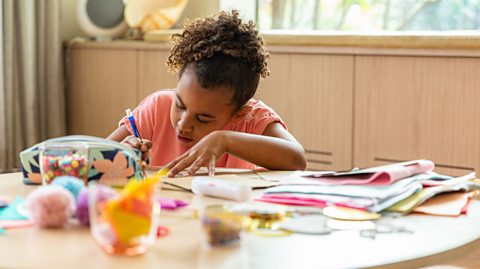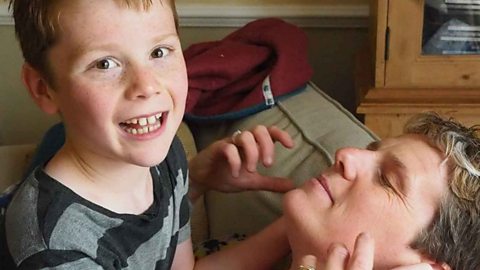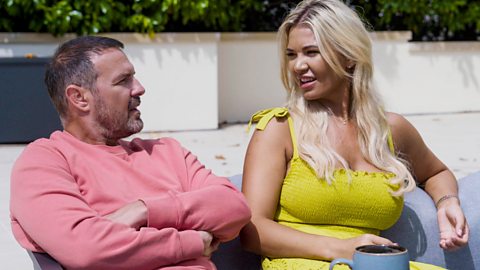by Karen Mace Head of Assessment, Education and Training, British Dyslexia Association
As a parent or carer of a young person with dyslexia, you are wearing many hats. In addition to all the work you were doing to support them emotionally and academically, you may find yourself playing the role of teacher and dyslexia specialist as you help them learn at home.
In 2019, a survey for the All-Party Parliamentary Group for Dyslexia and other SpLDs found that 95 percent of parents and carers felt they lacked the skills and knowledge to support their dyslexic child. So, if youтАЩre struggling, the most important thing to remember is, donтАЩt worry, youтАЩre not alone and itтАЩs perfectly normal to find supporting a dyslexic childтАЩs learning difficult.
Here are five simple ways you can make home learning more effective and enjoyable for you and your dyslexic childтАж
1. Get a routine

For most people, routine is important, but for learners with dyslexia and other neurodiverse conditions, it is even more critical.
A good starting point is to make a visual timetable for each day, which will create structure and enable your child to have a clear vision of the day ahead. You could use relevant pictures and colours consistently so your child can identify them.
Once a timetable has been prepared, itтАЩs time to think about where the learning will physically take place. For some learning, you may need a table, but an outdoor space or floor space may also be useful for certain situations тАУ the location of these should be outlined in the timetable.
2. Decide what to teach

The next step is to spend some time getting to know what learning level your child is at. The work should challenge them but not be inaccessible to them.
Bear in mind that every child is different - even moreso for a learner with dyslexia who is likely to be at different stages in different topics. Also, remember their ability may be reflected in spoken rather than written work.
When deciding on what to learn, your childтАЩs interests and strengths should be a large factor. Yes, there are things your child will have to learn, regardless of whether they enjoy it or struggle with it, but donтАЩt fixate on these. Give opportunities to learn about topics that your child enjoys and can do well, as this will help them stay motivated. Also include non-curricular activities and life skills such as cooking, sewing and gardening.
3. Teach using a тАШmultisensoryтАЩ approach

Multisensory simply means using more than one of a childтАЩs senses at a time. Because of the way the dyslexic brain works, learning this way is far more effective.
For example, if your child just reads a book they are using one sense - sight. But if they read along with an audiobook, they are using two senses - sight and hearing. This would be multisensory learning and would mean your dyslexic child absorbs and retains the information in the book far better.
An activity should include at least two senses тАУseeing something (visual), hearing something related to what is seen (auditory), some form of related movement of muscles, for example speaking or writing (kinaesthetic), and touching or feeling something (tactile).
Here is an example of how you might apply multisensory learning if your child needs to do some alphabet workтАж
1. Lay out an alphabet arc by putting the letters of the alphabet into an arc shape
2. Sing the alphabet song while touching each of the letters in turn
3. Discover the letter being introduced by taking items out of a bag that begin with the same letter
4. The learner feels the objects, names them and pulls them out to check if they are right
5. Identify the target sound and letter name
6. Demonstrate how to form the letters on a whiteboard
7. The learner explores forming the letter in sand, shaving foam, wiki sticks or similar
Multisensory learning is useful for children of any age. For an older child, multisensory teaching can be as simple as, instead of getting them to read a book about Ancient Egypt, do a virtual tour of the British Museum and discuss the topic with them as you take a virtual walk through their Ancient Egypt galleries. At the moment, lots of galleries and museums are offering free virtual tours on their websites. There is lots of information out there on multisensory teaching.
4. Embrace technology

Nowadays, there are so many free programs our computers, tablets and smartphones that can make a huge difference to young people with dyslexia.
In particular, the ones to look out for are text to speech programs, which read out written words on the device; speech to text, which allows your child to dictate their work to a device; and advanced spelling and grammar checkers. All the big technology companies have these features now and you will find lots of information out there about how to use them to support dyslexic learning.
Learning to touch type is one of the big skills that we find helps young people with dyslexia in education and on into the workplace. There are many free options available including the │╔╚╦┬█╠│тАЩs Dance Mat Typing.
Whilst they might not necessarily enjoy reading books, young people with dyslexia often take to listening to audiobooks and find a love of literature that way. Many audiobook companies even offer free childrenтАЩs books. This would be a fabulous activity to do as a break from other learning, or at the end of the day.
5. DonтАЩt overload your child

Learning one-on-one or in small groups is much more intense than a normal school day.
This is exacerbated for a dyslexic learner, because of way the dyslexic brain works - they tire faster.
ItтАЩs much better to get a smaller amount of quality teaching time in each day, than fight to hit a six-or-seven-hour day because you feel you should match the school day.

Karen Mace is Head of Assessment, Education and Training at the British Dyslexia Association. She has 25 years teaching experience in primary schools тАУ both in the UK and abroad тАУ including four years as a deputy headteacher and seven years as a SENCO.
If youтАЩre looking for more on dyslexia and how to support your child, is full of practical information and includes the latest information on the support available for parents.

More from │╔╚╦┬█╠│ Bitesize Parents' ToolkitтАж
Parents' Toolkit
Fun activities, real-life stories, wellbeing support and loads of helpful advice - we're here for you and your child.

Five ways to incorporate mindfulness into your childтАЩs day
Mindfulness can be a helpful concept for a child to practise. Here are some top tips as well as activities you can do at home.

How home schooling helped my child with AuDHD
Sarah Barker describes her son's transition from mainstream school, to home schooling, then to special school. From │╔╚╦┬█╠│ Bitesize.

Why I moved my child with SEND to a specialist school
Julie, mum to six-year-old Grace, explains why she now sends her child with SEND to a special needs school.

Christine McGuinness - How my autism can help me to help my kids
Christine McGuinness talks about the positives and challenges she's faced through her life as a mum since diagnosis.

